Northern Ireland: The Giant's Causeway
Jul 1, 2020 14:53:51 #
The Giant's Causeway is an area of about 40,000 interlocking basalt columns, the result of an ancient volcanic fissure eruption. It is located in County Antrim on the north coast of Northern Ireland, about three miles (4.8 km) northeast of the town of Bushmills.
It was declared a World Heritage Site by UNESCO in 1986 and a national nature reserve in 1987 by the Department of the Environment for Northern Ireland. In a 2005 poll of Radio Times readers, the Giant's Causeway was named the fourth greatest natural wonder in the United Kingdom. The tops of the columns form stepping stones that lead from the cliff foot and disappear under the sea. Most of the columns are hexagonal, although there are also some with four, five, seven or eight sides. The tallest are about 12 metres (39 ft) high, and the solidified lava in the cliffs is 28 metres (92 ft) thick in places.
Around 50 to 60 million years ago, during the Paleocene Epoch, Antrim was subject to intense volcanic activity, when highly fluid molten basalt intruded through chalk beds to form an extensive lava plateau. As the lava cooled, contraction occurred. Horizontal contraction fractured in a similar way to drying mud, with the cracks propagating down as the mass cooled, leaving pillarlike structures, which also fractured horizontally into "biscuits". In many cases, the horizontal fracture resulted in a bottom face that is convex, while the upper face of the lower segment is concave, producing what are called "ball and socket" joints. The size of the columns was primarily determined by the speed at which lava cooled. The extensive fracture network produced the distinctive columns seen today. The basalts were originally part of a great volcanic plateau called the Thulean Plateau, which formed during the Paleocene.
According to legend, the columns are the remains of a causeway built by a giant. The story goes that the Irish giant Fionn mac Cumhaill (Finn MacCool), from the Fenian Cycle of Gaelic mythology, was challenged to a fight by the Scottish giant Benandonner. Fionn accepted the challenge and built the causeway across the North Channel so that the two giants could meet. In one version of the story, Fionn defeats Benandonner. In another, Fionn hides from Benandonner when he realises that his foe is much bigger than he is. Fionn's wife, Oonagh, disguises Fionn as a baby and tucks him in a cradle. When Benandonner sees the size of the 'baby', he reckons that its father, Fionn, must be a giant among giants. He flees back to Scotland in fright, destroying the causeway behind him so that Fionn would be unable to chase him down. Across the sea, there are identical basalt columns (a part of the same ancient lava flow) at Fingal's Cave on the Scottish isle of Staffa, and it is possible that the story was influenced by this.
In overall Irish mythology, Fionn mac Cumhaill is not a giant but a hero with supernatural abilities, contrary to what this particular legend may suggest. In Fairy and Folk Tales of the Irish Peasantry (1888), it is noted that, over time, "the pagan gods of Ireland grew smaller and smaller in the popular imagination, until they turned into the fairies; the pagan heroes grew bigger and bigger, until they turned into the giants". There are no surviving pre-Christian stories about the Giant's Causeway, but it may have originally been associated with the Fomorians (Fomhóraigh); the Irish name Clochán na bhFomhóraigh or Clochán na bhFomhórach means "stepping stones of the Fomhóraigh". The Fomhóraigh are a race of supernatural beings in Irish mythology who were sometimes described as giants and who may have originally been part of a pre-Christian pantheon
Much of the Giant's Causeway and Causeway Coast World Heritage Site is owned and managed by the National Trust, and it is one of the most popular tourist attractions in Northern Ireland.
https://en.wikipedia.org/wiki/Giant's_Causeway
Fortunately it remained dry during our walk down the Giant's causeway and I was able to get these images - not taken through glass for a change. All were taken at f10, 1/250 sec, auto iso. Processed with Luminar 4. Enjoy!
Mark
It was declared a World Heritage Site by UNESCO in 1986 and a national nature reserve in 1987 by the Department of the Environment for Northern Ireland. In a 2005 poll of Radio Times readers, the Giant's Causeway was named the fourth greatest natural wonder in the United Kingdom. The tops of the columns form stepping stones that lead from the cliff foot and disappear under the sea. Most of the columns are hexagonal, although there are also some with four, five, seven or eight sides. The tallest are about 12 metres (39 ft) high, and the solidified lava in the cliffs is 28 metres (92 ft) thick in places.
Around 50 to 60 million years ago, during the Paleocene Epoch, Antrim was subject to intense volcanic activity, when highly fluid molten basalt intruded through chalk beds to form an extensive lava plateau. As the lava cooled, contraction occurred. Horizontal contraction fractured in a similar way to drying mud, with the cracks propagating down as the mass cooled, leaving pillarlike structures, which also fractured horizontally into "biscuits". In many cases, the horizontal fracture resulted in a bottom face that is convex, while the upper face of the lower segment is concave, producing what are called "ball and socket" joints. The size of the columns was primarily determined by the speed at which lava cooled. The extensive fracture network produced the distinctive columns seen today. The basalts were originally part of a great volcanic plateau called the Thulean Plateau, which formed during the Paleocene.
According to legend, the columns are the remains of a causeway built by a giant. The story goes that the Irish giant Fionn mac Cumhaill (Finn MacCool), from the Fenian Cycle of Gaelic mythology, was challenged to a fight by the Scottish giant Benandonner. Fionn accepted the challenge and built the causeway across the North Channel so that the two giants could meet. In one version of the story, Fionn defeats Benandonner. In another, Fionn hides from Benandonner when he realises that his foe is much bigger than he is. Fionn's wife, Oonagh, disguises Fionn as a baby and tucks him in a cradle. When Benandonner sees the size of the 'baby', he reckons that its father, Fionn, must be a giant among giants. He flees back to Scotland in fright, destroying the causeway behind him so that Fionn would be unable to chase him down. Across the sea, there are identical basalt columns (a part of the same ancient lava flow) at Fingal's Cave on the Scottish isle of Staffa, and it is possible that the story was influenced by this.
In overall Irish mythology, Fionn mac Cumhaill is not a giant but a hero with supernatural abilities, contrary to what this particular legend may suggest. In Fairy and Folk Tales of the Irish Peasantry (1888), it is noted that, over time, "the pagan gods of Ireland grew smaller and smaller in the popular imagination, until they turned into the fairies; the pagan heroes grew bigger and bigger, until they turned into the giants". There are no surviving pre-Christian stories about the Giant's Causeway, but it may have originally been associated with the Fomorians (Fomhóraigh); the Irish name Clochán na bhFomhóraigh or Clochán na bhFomhórach means "stepping stones of the Fomhóraigh". The Fomhóraigh are a race of supernatural beings in Irish mythology who were sometimes described as giants and who may have originally been part of a pre-Christian pantheon
Much of the Giant's Causeway and Causeway Coast World Heritage Site is owned and managed by the National Trust, and it is one of the most popular tourist attractions in Northern Ireland.
https://en.wikipedia.org/wiki/Giant's_Causeway
Fortunately it remained dry during our walk down the Giant's causeway and I was able to get these images - not taken through glass for a change. All were taken at f10, 1/250 sec, auto iso. Processed with Luminar 4. Enjoy!
Mark
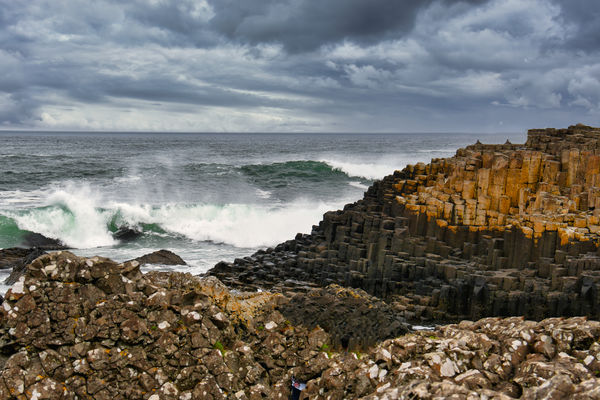
(Download)
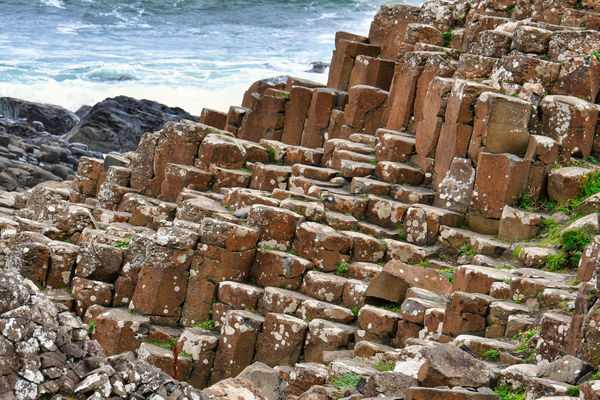
(Download)
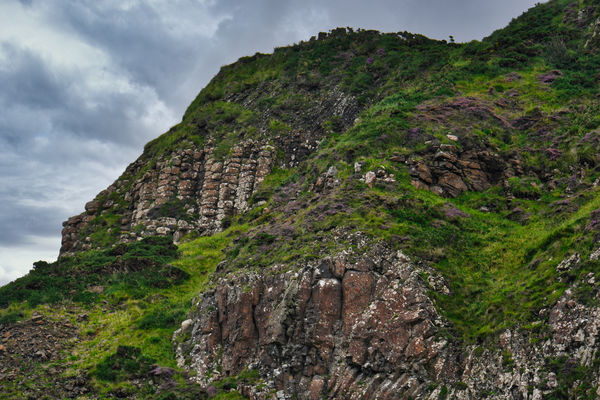
(Download)
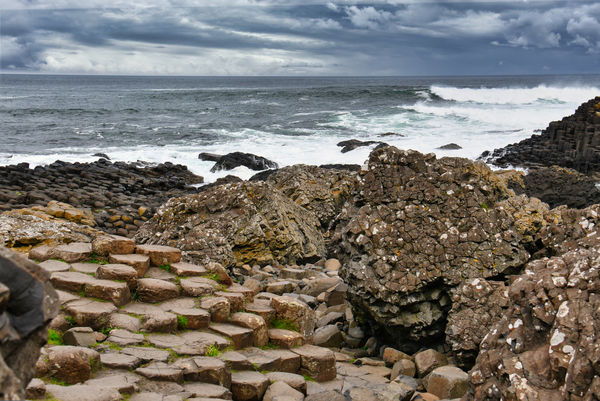
(Download)
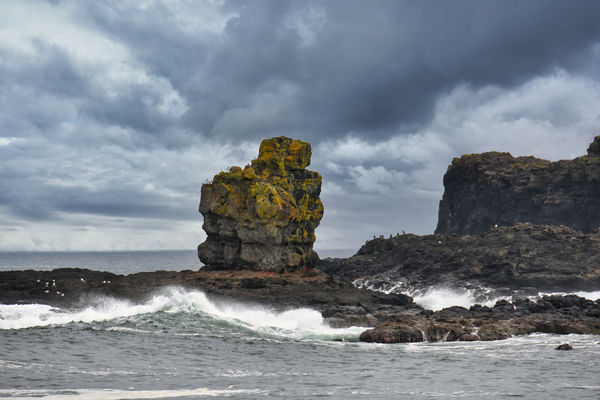
(Download)
The Chimney Stacks
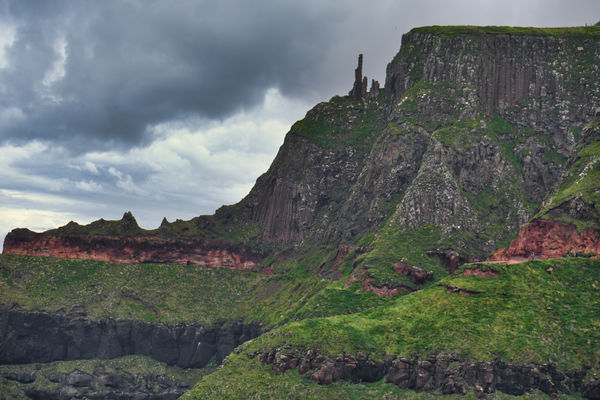
(Download)
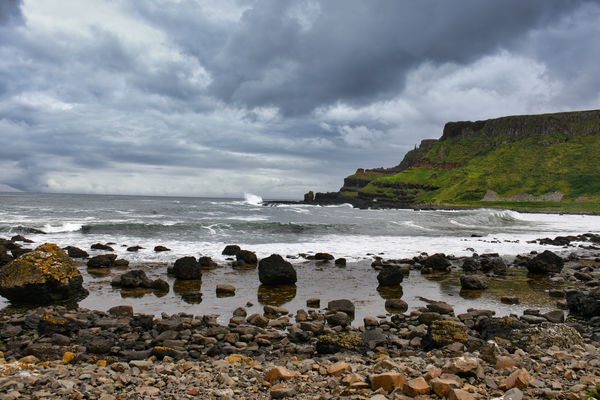
(Download)
The Giant's Boot
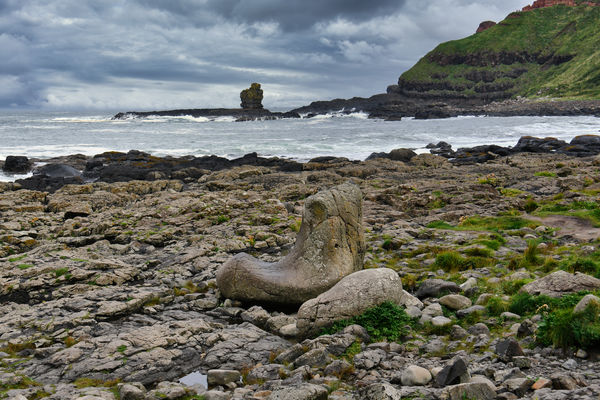
(Download)
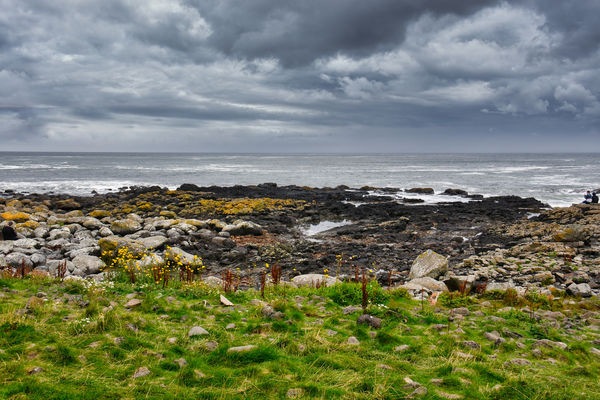
(Download)
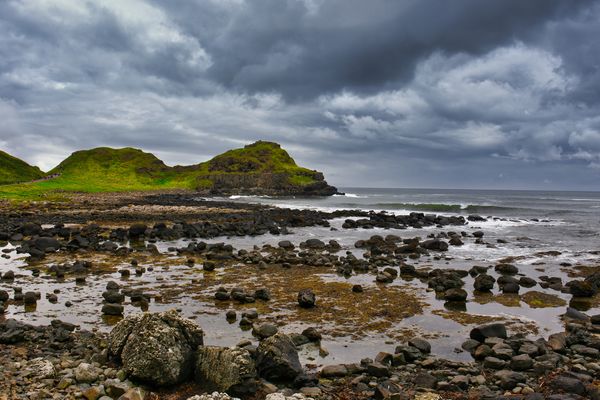
(Download)
Jul 1, 2020 15:00:32 #
Jerry Coupe
Loc: Kent, WA
An amazing geological area and certainly a scenic area. I had planned to visit here in May before the pandemic changes my plans. A very beautiful area...thanks for posting these images.
Jul 1, 2020 15:00:55 #
Jul 1, 2020 15:05:32 #
Jul 1, 2020 15:22:22 #
Jul 1, 2020 16:12:43 #
Jul 1, 2020 17:07:51 #
Jul 1, 2020 17:13:18 #
Jerry Coupe wrote:
An amazing geological area and certainly a scenic area. I had planned to visit here in May before the pandemic changes my plans. A very beautiful area...thanks for posting these images.
Thanks so much for commenting Jerry. I hope you get to reschedule the trip.
Jul 1, 2020 17:14:03 #
Jul 1, 2020 17:15:14 #
kpmac wrote:
A beautiful place excellently photographed. Nice job, Mark.
Thanks so much Ken. It was nice to walk around for a change and the area was really a target rich environment.
Jul 1, 2020 17:16:10 #
UTMike wrote:
Impressive set, Mark, one of your tour's best stops IMO!
Thanks Mike. We really enjoyed this stop. More images to come.
Jul 1, 2020 17:17:45 #
Jul 1, 2020 17:18:04 #
Jul 2, 2020 05:31:48 #
srfmhg wrote:
The Giant's Causeway is an area of about 40,000 in... (show quote)
Beautiful images Mark
Jul 2, 2020 06:13:33 #
If you want to reply, then register here. Registration is free and your account is created instantly, so you can post right away.









